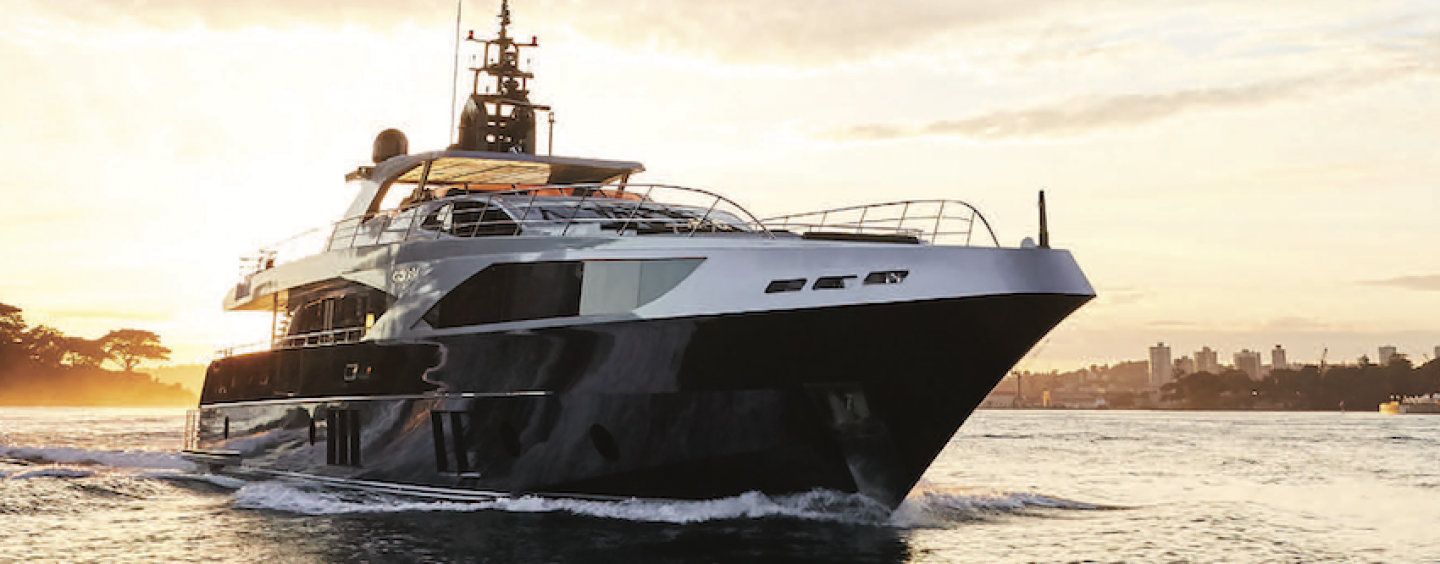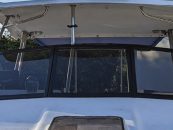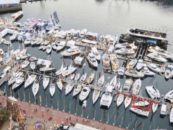International major events are happening in the Pacific region in the next two years, and Australia has opened up its doors to international superyacht charters when the Special Recreational Vessel Act was passed in December 2019. For the superyacht sector, this is such a welcome milestone after 20 years of working hard for the ability of foreign vessels to charter in Australian waters.
1. EASING THE WAY
The Special Recreational Vessel Bill 2019 was introduced in the House of Representatives on 27 November, agreed to on 3 December, then introduced in the Senate and agreed to on 5 December. The Governor-General gave his assent on 11 December.
In summary, the Act allows the owner, charterer, master or agent of a special recreational vessel to apply for a temporary licence for a special recreational vessel under the Coastal Trading (Revitalising Australian Shipping) Act 2012; and applies the Act to the extent necessary to regulate voyages conducted by special recreational vessels under such licences.
Under this Act, a special recreational vessel is a vessel that:
(a) is designed to be used wholly or primarily for recreational or sporting activities; and
(b) is over 24 metres in length; and
(c) is not used wholly or primarily for carrying cargo.
The Act permits applications for temporary licences authorising the vessels to carry passengers in Australia, but treated as if they were applications under the Coastal Trading Act. The owner, charterer, master or agent of the vessel who is granted the temporary licence will be able to engage in coastal trading.
Previously, foreign vessels could not operate commercially in Australia, unless they fully imported the vessel. This had been considered by the industry as a major deterrent to foreign superyacht owners who are considering cruising Australian waters.
The industry has been working hard for the ability for foreign vessels to charter for a very long time. “There are a lot of people who have contributed to this outcome, and the reason why there are so many is because this is such an important change for our industry and for Australia,” stated David Good, CEO of Superyacht Australia, the peak body for the Australian superyacht industry. Industry stalwarts, like Captain Richard Morris and Lance Cushion, have been in the forefront of all the work, together with business owners, such as Paul Darrouzett, Trenton Gay, Justin Parer, and more recently with the Superyacht Australia charter working group, led by former CEO MaryAnne Edwards, Kane Bygrave, Cameron Bray, Jo Howard and Luke McCaul, with the assistance and political advice from of Damien McGreevy, Nick Trompf and Dan McCarthy.
2. THE SUPERYACHT ADVANTAGE
According to Superyacht Australia, Australians dominate the superyacht industry in the world, with over a quarter of the world’s superyacht captains and crew hailing from down under. With the new Act and the continued support of the government, it means that Australia is supporting over 14,000 crew of highly skilled Australian seafarers. Australia is also the dominant refit and maintenance provided for superyachts in the Asia-Pacific region, with facilities and skilled tradesmen that rival those in the USA and Europe.
The industry believes that this new legislation will likely triple our industry activity almost overnight, with double the vessels visiting and the length of stay for each vessel increasing significantly. With Australia as a year-round destination, vessels will be encouraged to explore the Great Barrier Reef, Northern Territory and the Kimberley’s in the winter, and enjoy Port Stephens, Pittwater, Eden, Tasmania, Kangaroo Island, Abrolhos Islands, Margaret River and Rottnest Island in the summer.
“The Tokyo Olympics in July 2020 and the America’s Cup in Auckland 2021 are expected to bring around 160 superyachts to our region – which is on the radar for superyacht owners for the marvellous cruising grounds and world-class service facilities Australia offers,” said David.
The new change in the law also benefits the local superyacht charter market. “Regions that have a high level of charter activity receive increased international marketing exposure, which then encourages further investment in locally based vessels, infrastructure and repair facilities,” stated David. “With this change, Australia will enjoy a similar boost to our local industry and the thousands of skilled trade jobs and economic benefits that come with it.”
With the passing of the law, it was necessary to conduct training for vessel agents and charter brokers. Superyacht Australia immediately organised the training, with instructions provided by subject matter experts from government departments on the Coastal Trading Licencing System (CTLS), Goods and Services Tax (GST), commercial marine park permits, border and customs requirements. At the completion of the training attendees have been able to register as users on the CTLS and can apply for a temporary licence on behalf of vessels.
Organisers of the fourth annual Australian Superyacht Rendezvous were also quick to jump on the good news on the passing of the new law. This year’s event will be staged in the Whitsundays – first time for the event to be in the Great Barrier Reef. “[The] legislative change is a culmination of years of collaborative work and passion by many people in the marine industry to remove this ‘barrier to entry’, and we now throw out the welcome flag for international superyachts to attend the Australian Superyacht Rendezvous in October 2020,” said Paul Darrouzet, owner of Coral Sea Marina Resort, the host of the 2020 event.
Queensland is setting the course to become a recognised hub for global superyachts. The Superyacht Industry Development Fund provides grants that help local businesses secure a bigger share of the global superyacht market. This fund is part of the Queensland Superyacht Strategy 2018-2023, which sets out the state’s plan to increase global industry market share by 10%. Applications for Round 2 closed on 14 February.
“The changes to the [Special Recreational Vessel Bill 2019] were advocated for in our superyacht strategy, and having it pass with bipartisan support gives great confidence to the industry,” stated Member for Cairns, Michael Healy, Queensland Superyacht Strategy champion. “This will attract more superyachts to Queensland, and it will lengthen their stay when they get here. It is a great outcome for Queensland and our many leading marine businesses right along the supply chain.”
SUPERYACHT BERTHING AND REFIT SERVICES ON THE GOLD COAST
A $2 million funding by the Queensland government has been granted to support the Southport Yacht Club’s (SYC) superyacht berth project on the Gold Coast, as part of The Spit Masterplan. “The Southport Yacht Club estimates that this $7.7 million superyacht berth project, to be located adjacent to Jack Gordon Park, could see up to 25 jobs created during the construction phase, with many more created as a result of the project,” declared Cameron Dick, minister for state development. “The new berth will allow the SYC to cater for more, and larger boats, which opens up the Gold Coast to some of the world’s largest and most luxurious yachts.”
Minister Dick said that as long as the project met all approval requirements, superyachts could be docking at the facility by October 2020. “This would mean the Gold Coast would be able to capitalise on superyachts leaving Japan after the Tokyo Olympics before heading to New Zealand for the America’s Cup. Superyacht passengers spend more when they are in town. They have a much higher onshore spend on food and beverages, dining and other experiences so we expect to see this development stimulate flow-on jobs in other parts of the Gold Coast.”
Southport Yacht Club CEO Brett James said the berth represented a huge opportunity for the Coast’s growing superyacht industry and would help change the face of tourism on the Gold Coast. “This berth will open the doors to visits from bigger and more expensive yachts, which bring with them economic opportunities not just for the yacht club but for businesses across the region. More yachts mean more work for the people who service them up in Coomera, more orders for the people providing provisions to them, and more customers for restaurants, eateries and retail outlets across the Gold Coast. The SYC is already a designated customs and immigration clearance point, and this project will give international superyacht owners additional reasons to drop anchor in the Broadwater.”
Gold Coast Waterways Authority (GCWA) CEO, Hal Morris, said GCWA is continuing to work with other government agencies as well as industry to send a strong signal that the welcome mat is out for superyachts on the Gold Coast. “We’re proud to be working with our government counterparts and the marine industry to speed up approval for berthing facilities and support for navigation access to attract more superyachts to our Waterways City. Additionally, the completion of projects like the Coomera River dredging campaign means superyachts up to 60 metres in length are able to access the Gold Coast Marine Industry Precinct.”






























